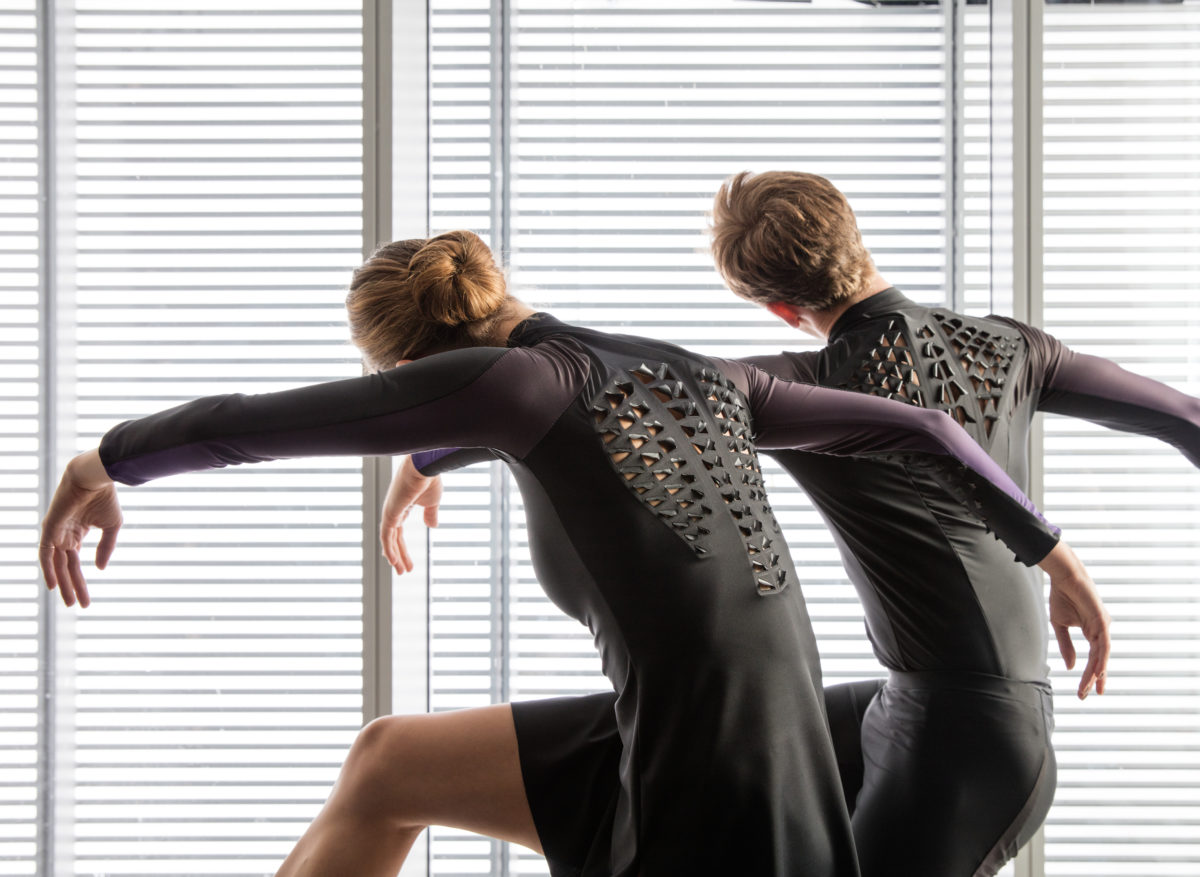Workout suit, which is moisture responsive has been designed by a team of MIT researchers
A workout suit that breathes out body’s heat, sweat is the next best technology for athletes. MIT scientists have designed a breathable workout suit with ventilating flaps that open and close in response to an athlete’s body heat and sweat. These flaps, which range from thumbnail to finger-sized, are lined with live microbial cells that shrink and expand in response to changes in humidity.
The cells act as tiny sensors and actuators, driving the flaps to open when an athlete works up a sweat, and pulling them closed when the body has cooled off. After five minutes of exercise, the suit’s flaps started opening up, right around the time when participants reported feeling warm and sweaty.

The researchers have also fashioned a running shoe with an inner layer of similar cell-lined flaps to air out and wick away moisture. The moisture-sensitive cells require no additional elements to sense and respond to humidity. The microbial cells they have used are also proven to be safe to touch and even consume. In the study published in the journal Science Advances, the researchers engineered moisture-sensitive cells to not only pull flaps open but also light up in response to humid conditions.
“We can combine our cells with genetic tools to introduce other functionalities into these living cells,” said Wen Wang, a former scientist at Massachusetts Institute of Technology (MIT) in the US. “We use fluorescence as an example, and this can let people know you are running in the dark. In the future we can combine odour-releasing functionalities through genetic engineering. So maybe after going to the gym, the shirt can release a nice-smelling odour,” said Wang.
The researchers first worked with the most common non-pathogenic strain of E coli bacteria, which was found to swell and shrink in response to changing humidity. As with the workout suit, the flaps on the running shoe opened and lit up when researchers increased the surrounding humidity; in dry conditions the flaps faded and closed. They further engineered the cells to express green fluorescent protein, enabling the cell to glow when it senses humid conditions. They then used a cell-printing method they had previously developed to print E coli onto sheets of rough, natural latex. The team printed parallel lines of E coli cells onto sheets of latex, creating two-layer structures, and exposed the fabric to changing moisture conditions.

When the fabric was placed on a hot plate to dry, the cells began to shrink, causing the overlying latex layer to curl up. When the fabric was then exposed to steam, the cells began to glow and expand, causing the latex flatten out. After undergoing 100 such dry/wet cycles, Wang said the fabric experienced “no dramatic degradation” in either its cell layer or its overall performance.
The researchers worked the bio-fabric into a wearable garment, designing a running suit with cell-lined latex flaps patterned across the suit’s back. “People may think heat and sweat are the same, but in fact, some areas like the lower spine produce lots of sweat but not much heat,” said Lining Yao, former graduate student at MIT.
Going forward, the team is looking to collaborate with sportswear companies to commercialize their designs, and is also exploring other uses, including moisture-responsive curtains, lampshades, and bed sheets. This research was supported, in part, by MIT Media Lab and the Singapore-MIT Alliance for Research and Technology.








